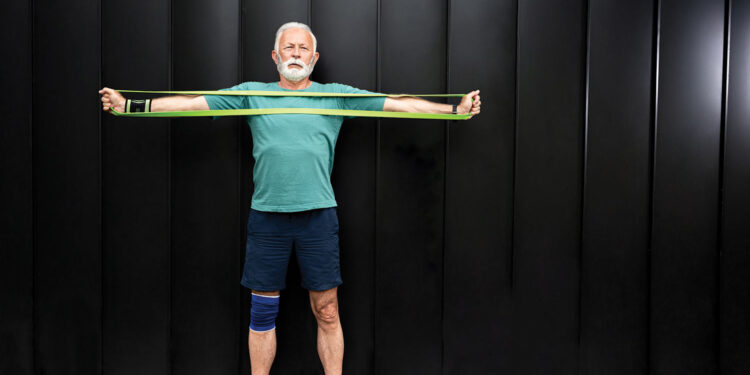Appealing to the Baby Boomer Generation in community recreation centers.
The benefits and importance of exercise, especially when it comes to aging, are well known. Despite this, the American College of Sports Medicine reports only 27% of older adults meet the recommended physical activity guidelines.
As community rec centers, it is crucial to ensure you are doing your best to get active aging adults in your community moving.
One facility making this a priority is the Jewish Community Center of Syracuse in Syracuse, New York. The JCC of Syracuse attracts seniors to its facility through recommendations from senior insurance providers.
“We currently accept Silver Sneakers, Silver and Fit, and Renew Active by United Healthcare,” said Patrick Scott, the sports and fitness director for the JCC of Syracuse. “We are listed on their websites and in print, which helps draw a lot of people to us. We also advertise with our senior meal program to encourage those seniors who are coming for meals to also come into the fitness center or take virtual fitness classes.”
The JCC of Syracuse doesn’t have a hard time getting active aging adults into their facility, as most of its membership base is of the older generation. Because of this, the JCC’s program instructors are trained to cater to all ages in their classes.
“Since our facility tends to skew older as far as members are concerned, all of our instructors are very experienced at adapting and formatting their classes to be accessible for the older crowd,” said Scott. “We have several classes that will use chairs in class for people to sit while they exercise, and other classes will modify exercises like doing a stationary march instead of jumping. We also offer eight classes a week specifically geared toward older adults and advertised that way.”
The JCC’s most popular classes are Senior Strength and Balance. These classes regularly get 20 to 25 participants, even when they are offered virtually through Zoom. These classes are done from a chair with light weights and bands. Scott said classes will consist of strength training, balance training — standing behind the chair and using it for stability — and some seated conditioning drills.
Some community recreation facilities might be hesitant to cater online classes to the senior population because the narrative is often written that they don’t utilize technology. However, according to AARP, in 2020 51% of older Americans — 50 and older — bought some tech product. The top purchases included:
- Smartphone (23%)
- Computer or laptop (12%)
- Smart television (11%)
- Tablet (10%)
- Smart home technology or device (12%)
- Wearable device (7%)
Additionally, current smartphone adoption is 86% among Americans ages 50 to 59, 81% for those 60 to 69, and 62% for those 70 and older.
With this knowledge in mind, it is clear to see the older population is interested in utilizing technology. It may be time to survey your older members and see if virtual classes are an option they want. At the JCC of Syracuse, they are a hot commodity.
“As for encouraging our seniors to take virtual classes, we really haven’t had to encourage them at all. They were the ones constantly pushing us to go online and remain online for several of our classes,” said Scott. “It was their feedback that gave us the idea to stream our in-person classes, so even if someone is home they can participate in our classes. Honestly, it has taken minimal encouragement from our end. For a lot of our seniors, these Zoom classes are one of the few social interactions they are getting. Every week, three times a week, they are on Zoom taking our group classes and interacting with one another.”
While it is important to attract active aging adults into your facility, it’s important to keep in mind they may be the most hesitant to return to in-person classes because they are the most at-risk for COVID-19, according to the World Health Organization.
Because of this, Scott said it’s best to market to the Baby Boomer Generation by advertising as a clean, well-maintained and not overly-crowded facility.
“As people ‘age out’ of the big-box gym, they want something smaller, more intimate and less crowded,” said Scott. “They don’t want to be fighting for equipment, surrounded by muscle heads throwing a ton of weight around. And we are the club to provide that for them.”










